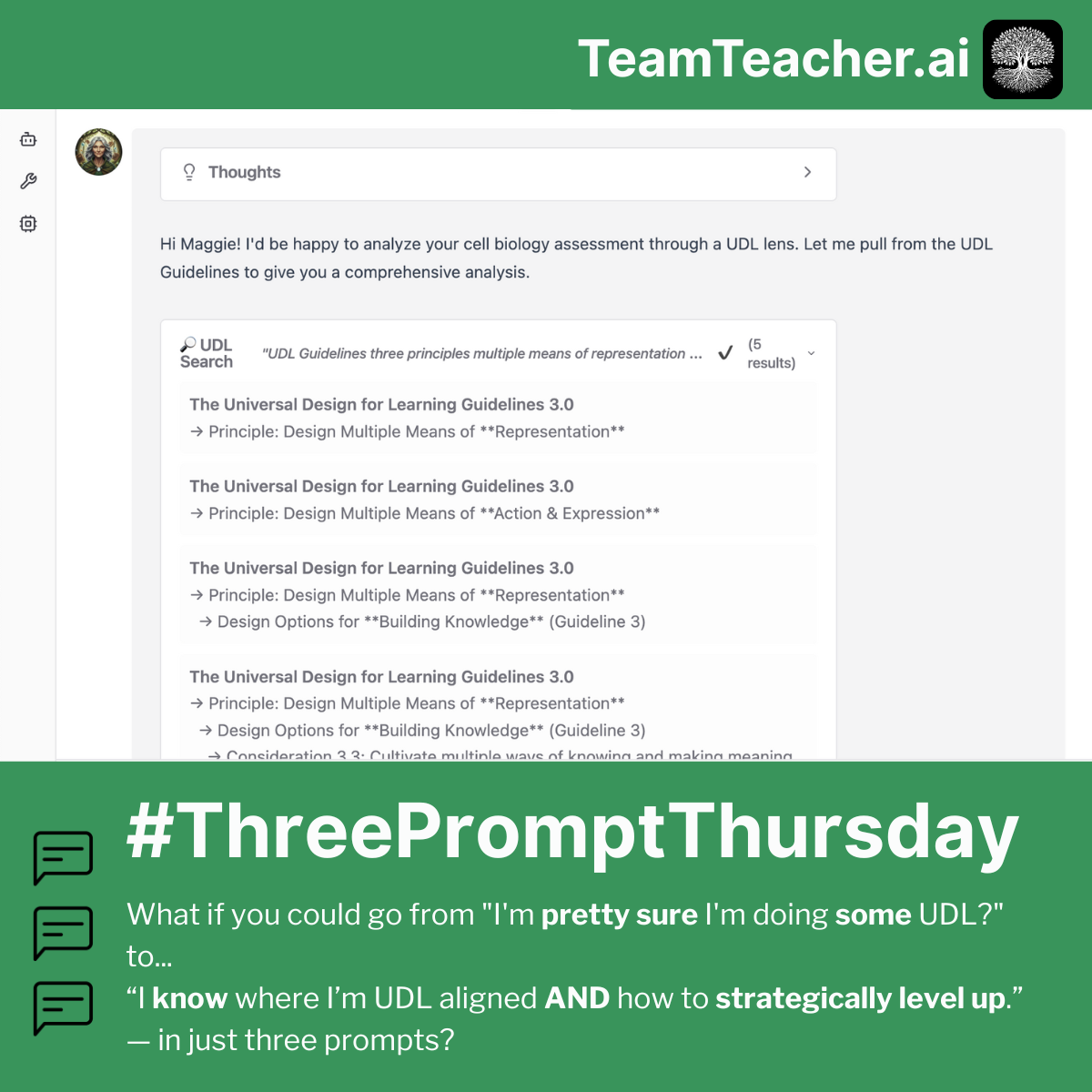UDL Alignment Analysis: Three Prompts to Inclusive Design
UDL Alignment Analysis: Three Prompts to Inclusive Design 🌈
Teachers want to create inclusive learning environments. The challenge isn't commitment—it's finding time to analyze what you're already doing well and identify strategic next steps.
This workflow helps you assess your lessons against the Universal Design for Learning framework, recognize existing strengths, and integrate specific accessibility strategies. Go from "I think I'm doing some UDL?" to knowing exactly where you're aligned with the framework and how to strategically level up.
The Three Prompts
🎯 Prompt 1: Analyze Current Alignment
Hi Iris, I'm attaching my [unit plan/lesson/assessment] on [topic] for [grade level/course]. Can you analyze it against the UDL Guidelines and show me: (1) where I'm already providing multiple means of representation, engagement, or expression, and (2) where the biggest opportunity gaps are for making this more accessible?
[attach your lesson plan, unit overview, or assessment]
✏️ Prompt 2: Get Specific Strategies
Thanks! This is really helpful to see what I'm already doing well. Now, for the biggest gap you identified, can you suggest 2-3 specific, classroom-ready strategies that would address this barrier without requiring me to rebuild the entire lesson?
📋 Prompt 3: Integrate and Document
Perfect! Can you create a revised [lesson plan/assessment rubric/unit overview] that integrates these UDL strategies, and includes a quick reference showing which UDL guidelines I'm now addressing? I want to be able to explain my design choices if asked.
How to Adapt This 🔧
- Different planning stages: Works with draft lessons, existing units, or assessments you want to improve
- Different subjects and grade levels: The UDL framework applies universally across content areas
- Team planning: Run this analysis on collaborative unit plans to build shared understanding of inclusive design
What You'll Get ✨
This workflow gives you a complete UDL alignment analysis and actionable next steps:
- Analysis of where your current materials already align with UDL principles
- Identification of the biggest accessibility gaps in your design
- 2-3 concrete, classroom-ready strategies to address barriers
- A revised version of your materials with UDL strategies integrated and documented
You'll finish with both insight into your current practice and concrete materials ready to use.
🌳 Pro tip: TeamTeacher's UDL knowledge base is built with Guidelines 3.0 from CAST, so you're working with current, accurate principles rather than outdated or AI-hallucinated information.
Want to see where this started? Check out the original #ThreePromptThursday LinkedIn post


